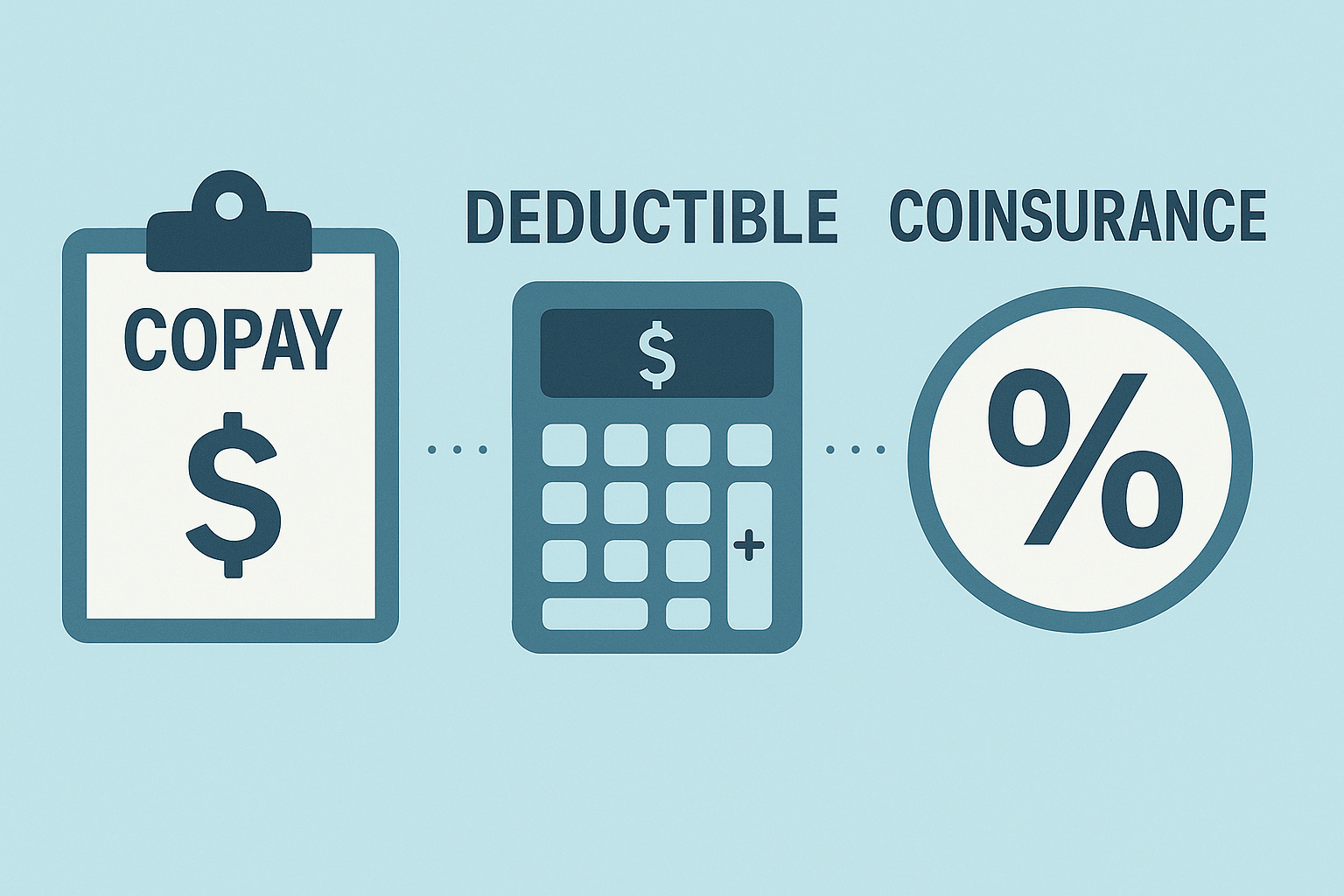Health insurance terms can be confusing, especially if you’re new to buying your own coverage. If you’ve ever looked at your insurance card or medical bill and wondered, “What exactly am I paying for?”—you’re not alone. Let’s break down three key terms that impact your out-of-pocket costs: deductibles, copays, and coinsurance.
What Is a Deductible?
Your deductible is the amount you must pay out of pocket each year before your health insurance starts to share in the costs. For example, if your plan has a $2,000 deductible, you’ll pay the first $2,000 of your medical bills yourself (excluding preventive care, which is often covered at 100%).
What Is a Copay?
A copay is a fixed amount you pay for a specific service, such as a doctor’s visit or prescription medication. For example:
-
$25 for a primary care visit
-
$50 for a specialist
-
$10–$60 for a prescription, depending on the tier
Copays usually don’t count toward your deductible but do count toward your out-of-pocket maximum.
What Is Coinsurance?
Coinsurance is your share of the cost after your deductible has been met. Instead of a flat fee, it’s a percentage. For example, if your coinsurance is 20%, and you’ve already met your deductible, you’ll pay 20% of the cost of services, and your insurance will cover the rest.
Let’s say you have:
-
A $2,000 deductible (already met)
-
20% coinsurance
-
A $1,000 medical bill
You would owe $200 (20% of $1,000), and insurance would cover the remaining $800.
Don’t Forget the Out-of-Pocket Maximum
All of these costs—your deductible, copays, and coinsurance—count toward your out-of-pocket maximum, which is the most you’ll have to pay in a year. Once you hit that limit, your plan pays 100% of covered medical expenses for the rest of the year.
Final Thoughts
Understanding how your health insurance works helps you budget better and avoid surprises. If you’re comparing plans, don’t just look at the monthly premium—consider how deductibles, copays, and coinsurance will affect your total costs.

